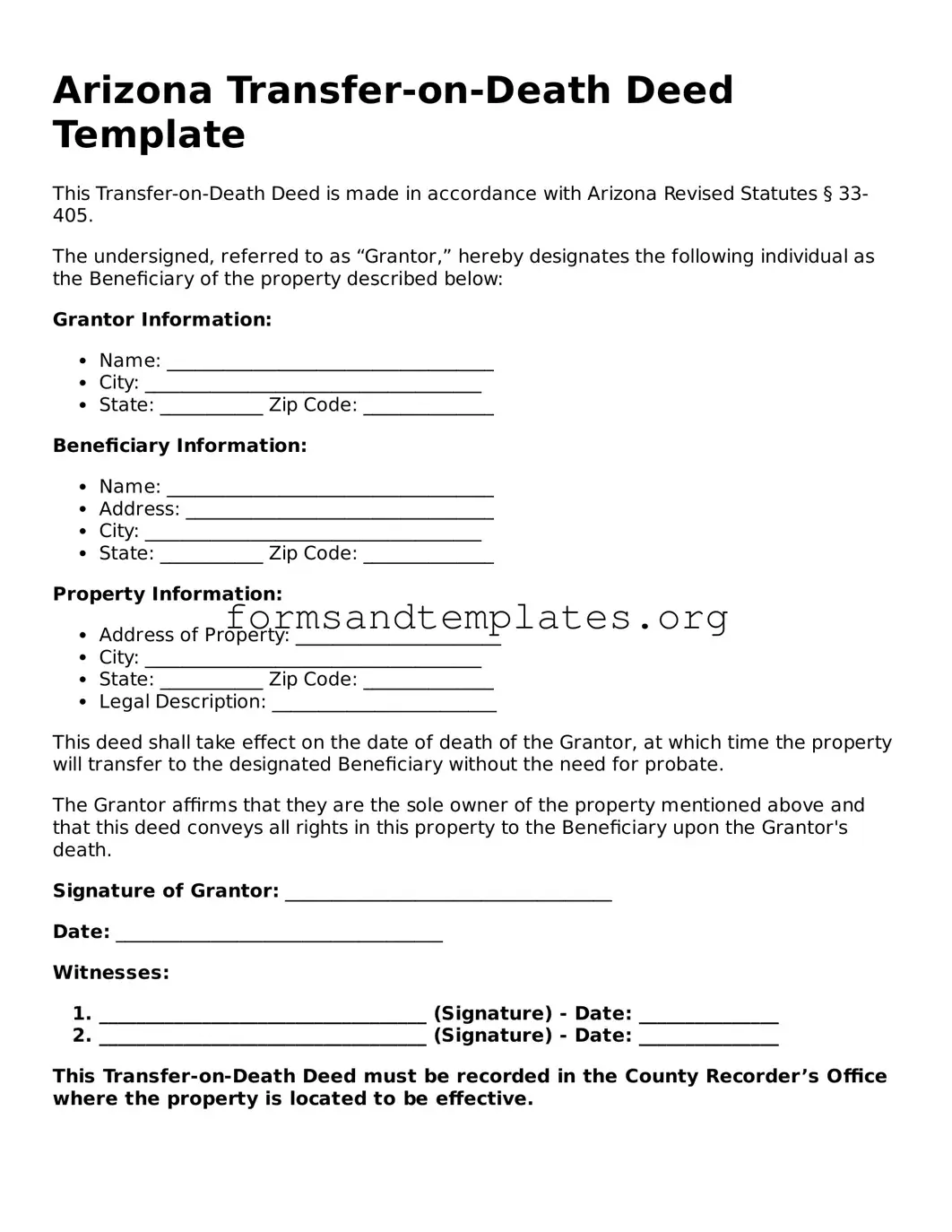Arizona Transfer-on-Death Deed Template
This Transfer-on-Death Deed is made in accordance with Arizona Revised Statutes § 33-405.
The undersigned, referred to as “Grantor,” hereby designates the following individual as the Beneficiary of the property described below:
Grantor Information:
- Name: ___________________________________
- City: ____________________________________
- State: ___________ Zip Code: ______________
Beneficiary Information:
- Name: ___________________________________
- Address: _________________________________
- City: ____________________________________
- State: ___________ Zip Code: ______________
Property Information:
- Address of Property: ______________________
- City: ____________________________________
- State: ___________ Zip Code: ______________
- Legal Description: ________________________
This deed shall take effect on the date of death of the Grantor, at which time the property will transfer to the designated Beneficiary without the need for probate.
The Grantor affirms that they are the sole owner of the property mentioned above and that this deed conveys all rights in this property to the Beneficiary upon the Grantor's death.
Signature of Grantor: ___________________________________
Date: ___________________________________
Witnesses:
- ___________________________________ (Signature) - Date: _______________
- ___________________________________ (Signature) - Date: _______________
This Transfer-on-Death Deed must be recorded in the County Recorder’s Office where the property is located to be effective.
